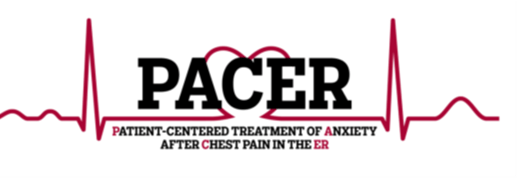Chest pain is the second most common reason for emergency room (ER) visits. Many people who go to the ER for chest pain are at low risk for a heart attack, and in about half of these patients, anxiety is the cause. After being ruled out for heart attack, anxiety often goes untreated, even though addressing it could prevent ongoing symptoms and repeat ER visits.
Cognitive behavioral therapy (CBT), which helps people change thought patterns to improve how they feel, is one way to treat anxiety.
In this study, the research team compared three approaches to treating anxiety in patients who had visited the ER with low-risk chest pain:
- Referral to a primary care doctor
- Online self-help CBT with peer support
- Therapist-led CBT
The team screened ER patients with low-risk chest pain for anxiety and enrolled 375 adults with high anxiety. Participants were randomly assigned to one of the three groups.
-
The first group received a referral to a primary care doctor, who also received the patient’s screening results. Patients also got an educational brochure on anxiety and treatment options.
-
The second group completed an online CBT course with six lessons over 8–12 weeks on managing worry and facing fears, plus peer support from certified recovery specialists. Those with panic symptoms completed two additional exposure therapy lessons.
-
The third group received eight one-hour CBT sessions with a therapist by computer or phone over 12 weeks, with exposure therapy added for patients who experienced panic.

